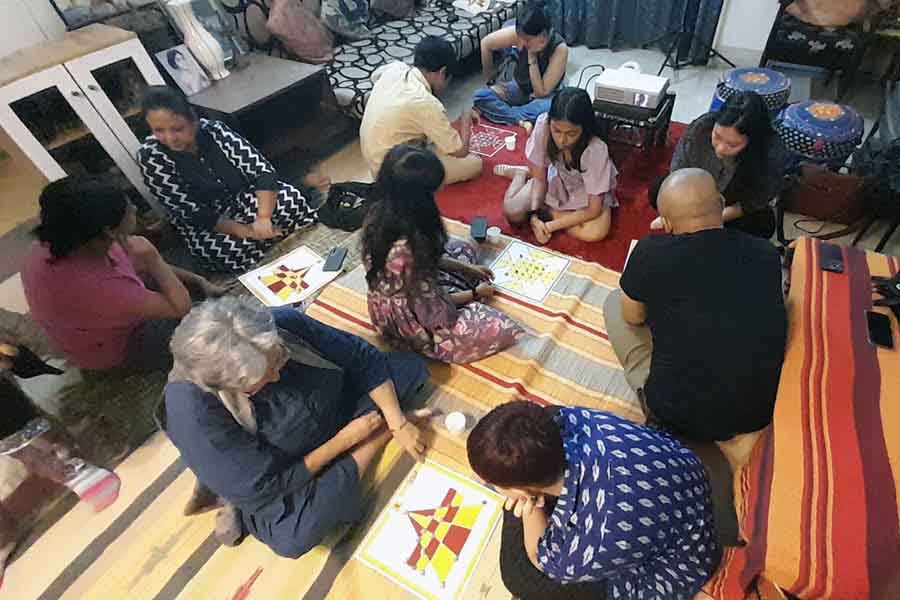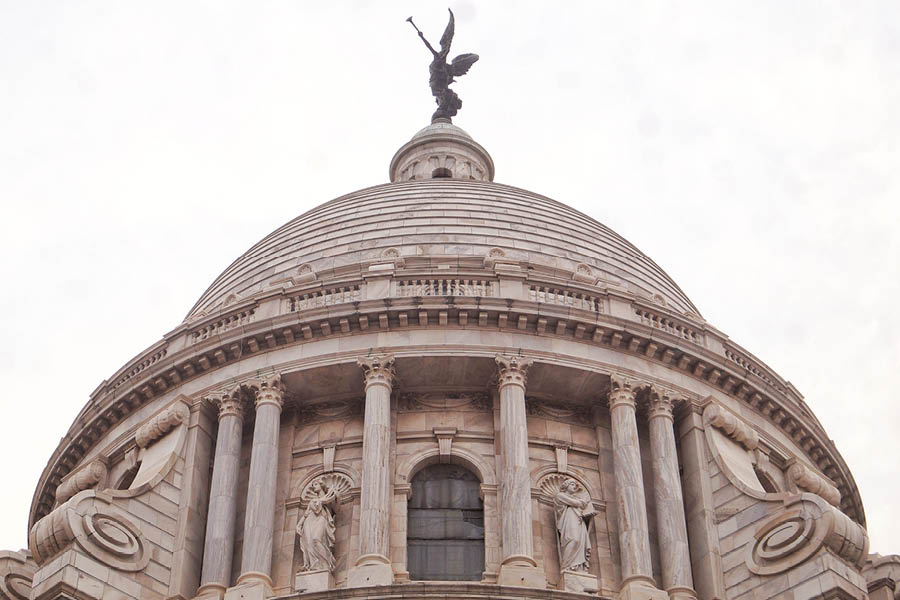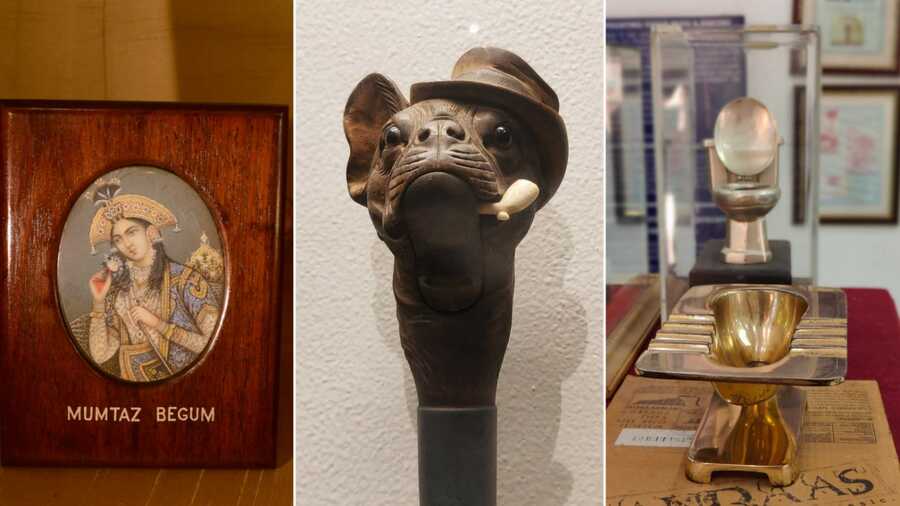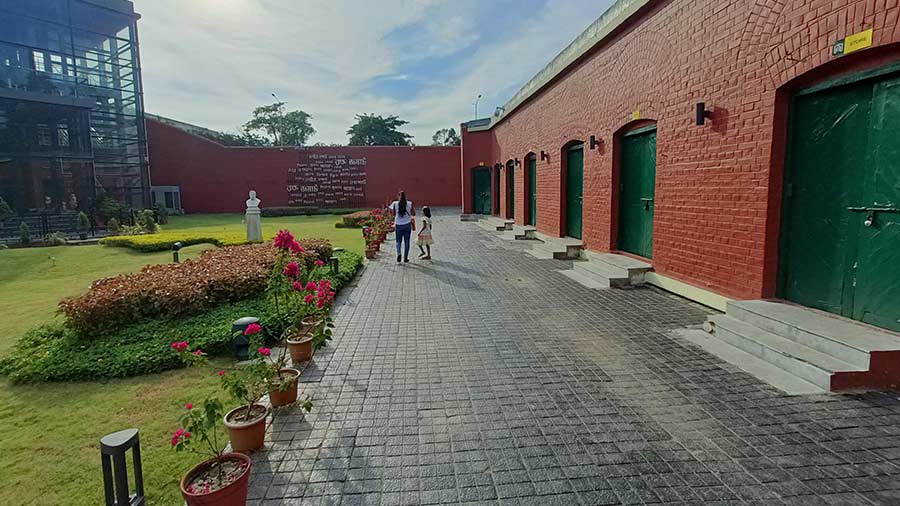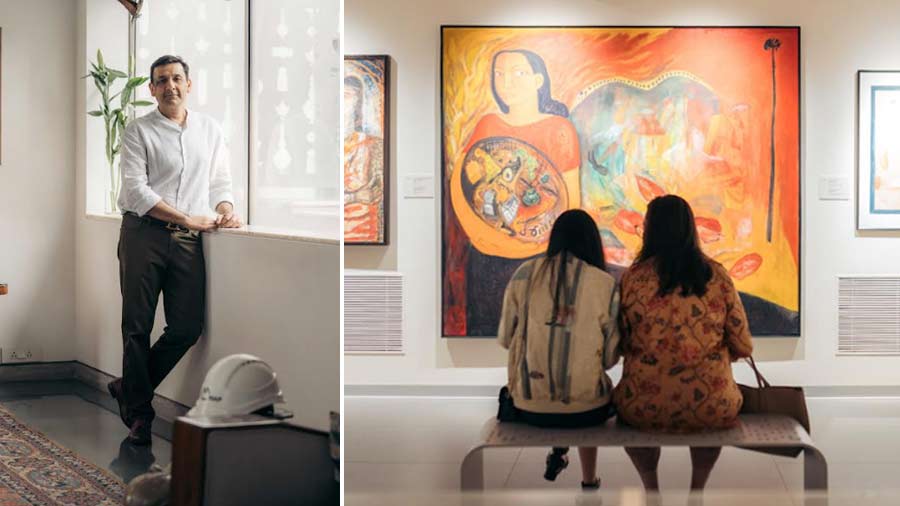About 20-odd men and women in Ballygunge were engaged in playing the Bagh Chal, a board game of Nepalese origin. It may sound unusual but this was the scene in the Goutam Sen Memorial Board Game Museum on May 19, a day after the International Museum Day.
The event was an initiative of Delhi Art Gallery (DAG) and was part of the International Museum Day celebrations. This year, DAG focused on the theme, ‘A Weekend in Museums: Rethinking Museum Visits.’
The Goutam Sen Memorial Board Game Museum is the brainchild of Souvik Mukherjee, a faculty member at the Centre for Studies in Social Sciences, Kolkata. A professor in English, Mukherjee’s MPhil and PhD were both centered around video games. Later, his areas of interest extended to board games and he started collecting them from various sources. He finally decided to put his collection in a museum, which was named after his father-in-law Goutam Sen, an avid chess player.
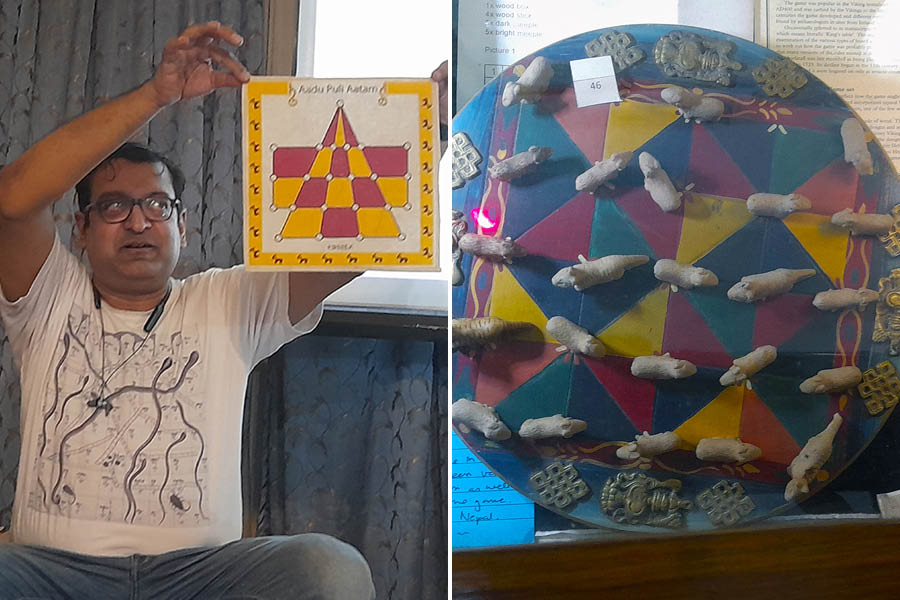
Souvik Mukherjee displays a Bagh Chal board and (right) Bagh Chal
Mukherjee’s wife, Amrita Sen, narrated: “My father was a chartered accountant (CA) by profession and although he never took up chess professionally but it had always been his passion. He was a member of the Alekhine Chess Club and was active in club activities.” Sen, who presently is a professor in English at the Calcutta University, never took up the game seriously but the pieces of the chess board have always fascinated her. So during her research years, she used to pick up unique chess sets from the places of her visit.
Sen added: “Sadly, my father fell victim to Covid-19 and passed away in the first phase of the pandemic.” So when the board game museum finally came up in November, 2023, the couple decided to name it after Goutam Sen.
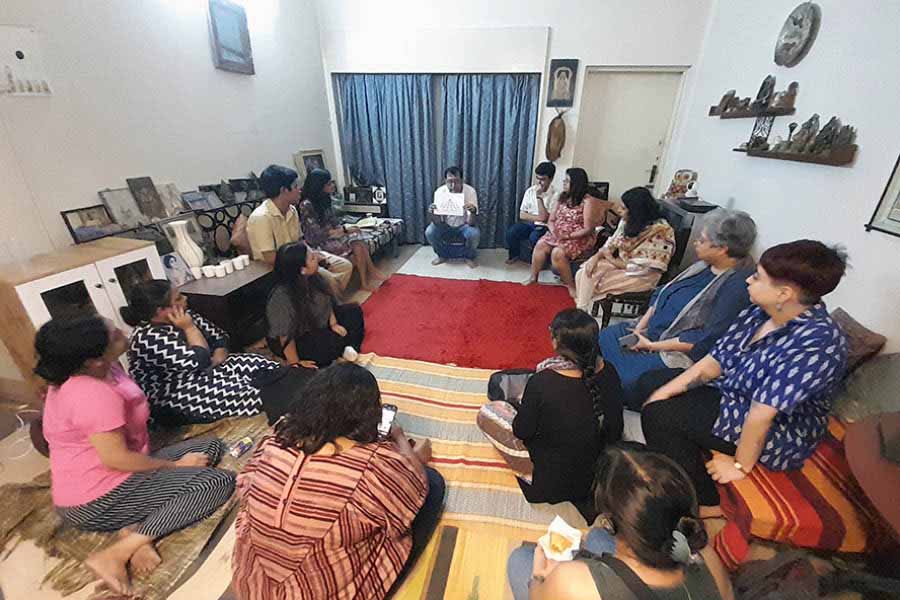
The interactive session drew almost 20 enthusiasts.
Today, the museum exhibits over 60 board games, although none of the pieces is antique but there are replicas of some of the oldest board games, including the oldest recorded board game. The exhibits, many of which can be considered as objects of art, are displayed in showcases with portable lights. They are provided with details written description along with QR codes. Mukherjee narrated: “Board games are not just simply games but have deeper sociological connects and give a view of the society of that time.”
“Many of the games had a spiritual connect and also are integral part of myths and history.”
Exhibits worth a dekko at the museum
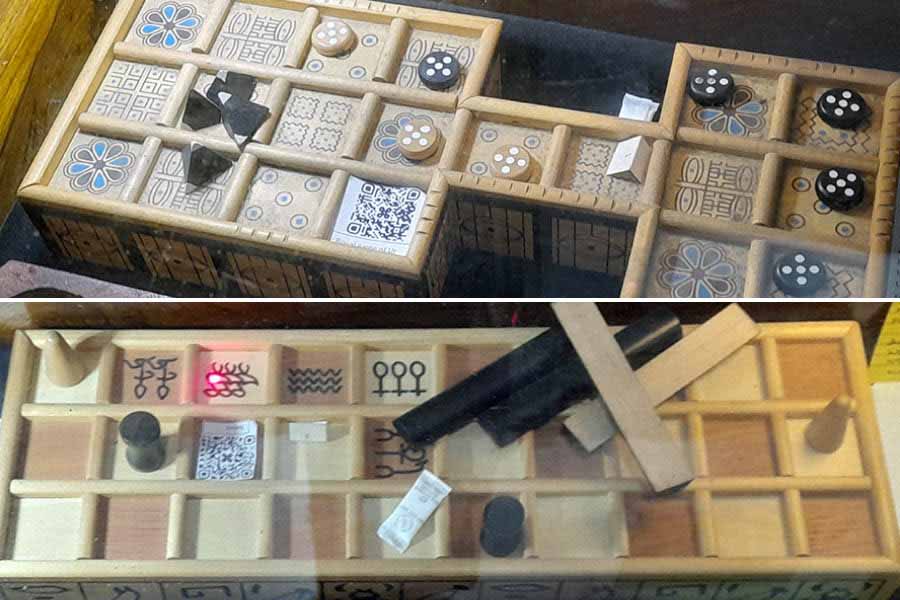
(Top) The Royal Game of Ur and (above) Senet
Royal Game of Ur
Often considered as the oldest recorded board game in the world. The game was first found during an archaeological excavation during the early 20th century. It was found in a 4,400-year-old royal tomb of Ur, an important city of Sumerian civilisation in ancient Mesopotamia (now Iraq). Later, various versions of the same board game were found all over the Middle East and as far as Sri Lanka. Mukherjee added: “The rules of the game were long lost but were recovered from a Jewish lady in Israel, who had her origin from Kochi in Kerala, where the game was known as Aasha.” The board and accessories displayed at the museum is a replica collected by Mukherjee from the British Museum in London.
Senet
Senet is another ancient board game that originated from Egypt. It is played on a rectangular board of 30 (3x10) squares. A few of the squares have hieroglyphics symbols signifying Karmic life. It is believed that the Pharaoh himself played the game before the beginning of the royal court. The museum piece was collected from a museum in Turin, Italy.
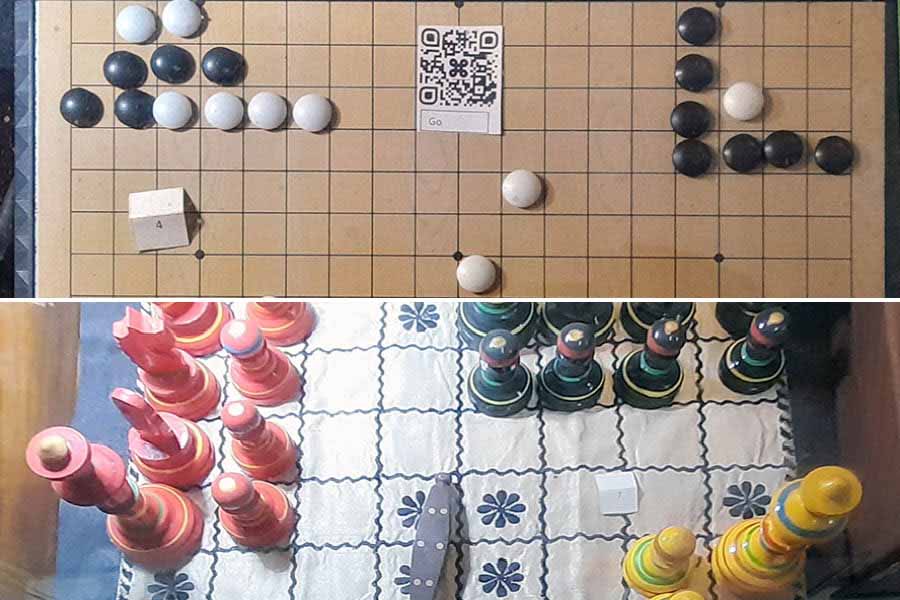
(Top) Portion of the Go board with pieces and (above) Chaturang
Go
The name originates from the Japanese word ‘igo’, which literally translates into go and refers to the ‘board game of surrounding’. Although the name has a Japanese origin, the game originated from China about 2,500 years ago. The game is still played throughout the Oriental countries and is considered as the oldest continuously played board games of the world.
Chaturanga
Considered as the older cousin of chess, this is a four-player game played on a 64-square board (similar to chess). Each member has a king, bishop, knight, rook and four pawns. The colours of the four sets are different and hence, the name.
Chess
No wonder the museum named in honour of a chess lover has the greatest collection of chess sets from all across the world. A chess set from Mexico has Aztec and Spanish soldiers facing each other. Closer home, there are chess sets of terracotta and dokra.
Bagh Chal
The two-player game originating from Nepal has several versions. The board as well as the number of pieces vary. It is virtual fight between tigers and goats. Where the tiger eats the goats by jumping over them and the goats try to prevent the tigers from moving. It is a simple game and played across the sub-continent. It has different names, including Bagh Bandi.
The DAG event on the occasion of the International Museum Day focused on creating awareness and interactive sessions with museums. Sumona Chakravarty, vice-president (museums), DAG, said: “This year, the three-day event focused on three museums, which were Indian Museum, Birla Academy of Art & Culture and the Goutam Sen Board Game Museum. The focus was on different types of museums and each came up with hands on activities.”
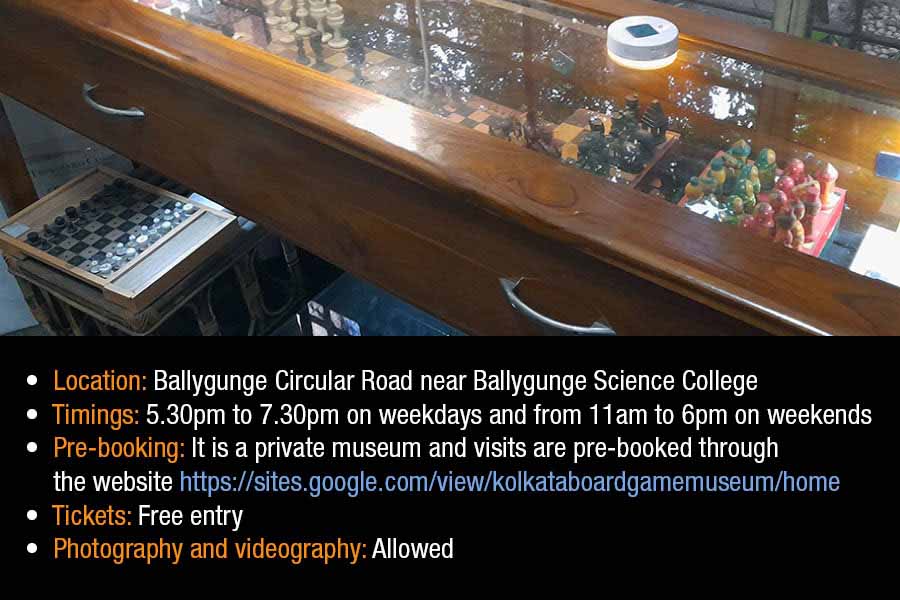
The session which had about 20 invited guests started with a brief introduction session on board games by Mukherjee followed by a brief about Goutam Sen by her daughter. In the second session, people visited the museum in groups of five with Mukherjee as the guide. The rest of the people were engaged in playing Bagh Chal. The participants tried different versions of the game on different boards, thus getting a true feel of the game.
Mukherjee said: “The game was chosen for its simplicity and variation. It is easy for beginners to understand the rules and play the game.” Mukherjee is looking forward for more such interactive sessions at his museum.
